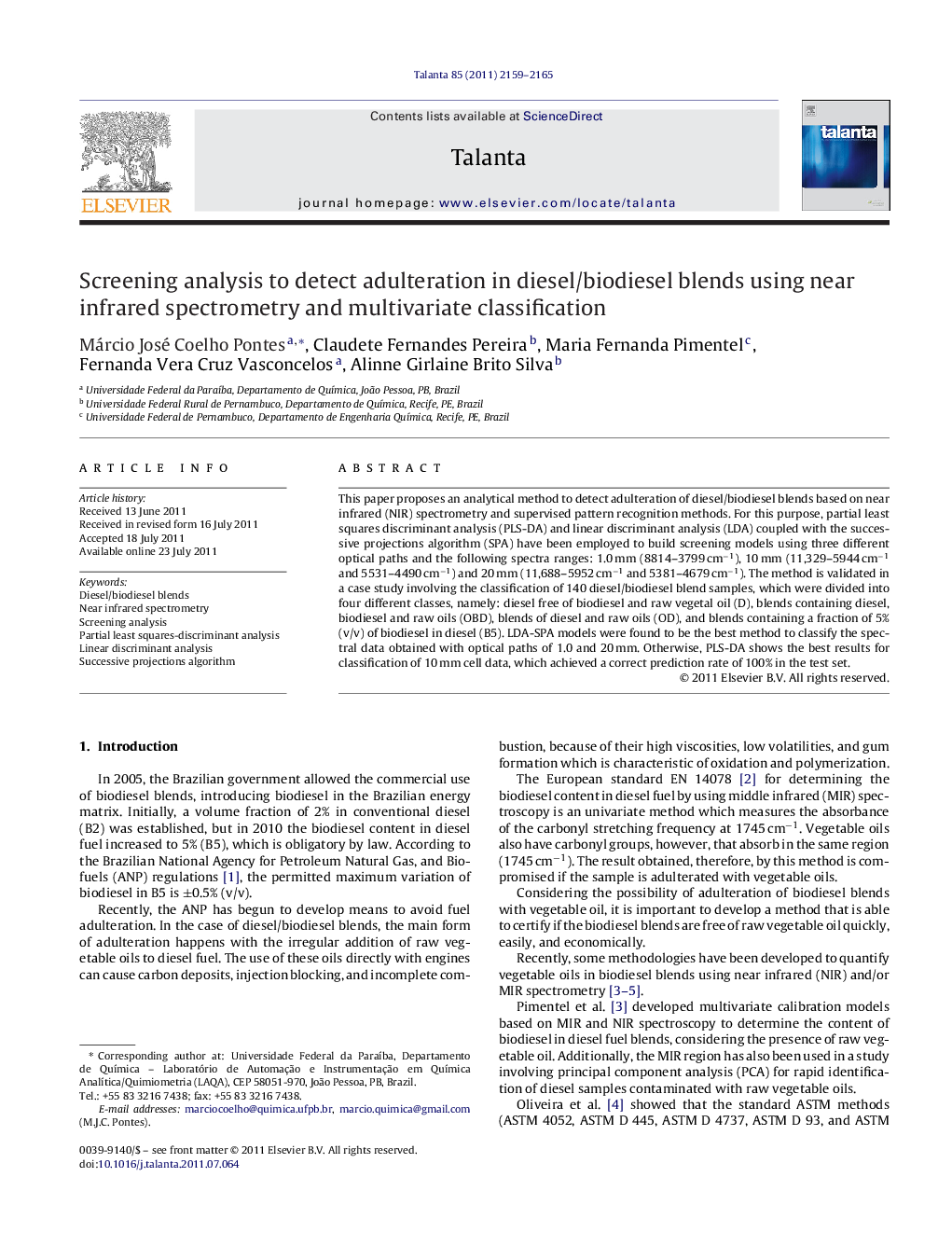| کد مقاله | کد نشریه | سال انتشار | مقاله انگلیسی | نسخه تمام متن |
|---|---|---|---|---|
| 10559512 | 969627 | 2011 | 7 صفحه PDF | دانلود رایگان |
عنوان انگلیسی مقاله ISI
Screening analysis to detect adulteration in diesel/biodiesel blends using near infrared spectrometry and multivariate classification
دانلود مقاله + سفارش ترجمه
دانلود مقاله ISI انگلیسی
رایگان برای ایرانیان
کلمات کلیدی
Successive Projections Algorithm - الگوریتم پیش بینی های متوالیpartial least squares-discriminant analysis - تجزیه و تحلیل خرده مقیاس جزئیLinear discriminant analysis - تجزیه و تحلیل خطی خطیScreening analysis - تجزیه و تحلیل غربالگریDiesel/biodiesel blends - دیزل / بیودیزل مخلوط می شودNear infrared spectrometry - طیف سنجی نزدیکی مادون قرمز
موضوعات مرتبط
مهندسی و علوم پایه
شیمی
شیمی آنالیزی یا شیمی تجزیه
پیش نمایش صفحه اول مقاله

چکیده انگلیسی
This paper proposes an analytical method to detect adulteration of diesel/biodiesel blends based on near infrared (NIR) spectrometry and supervised pattern recognition methods. For this purpose, partial least squares discriminant analysis (PLS-DA) and linear discriminant analysis (LDA) coupled with the successive projections algorithm (SPA) have been employed to build screening models using three different optical paths and the following spectra ranges: 1.0Â mm (8814-3799Â cmâ1), 10Â mm (11,329-5944Â cmâ1 and 5531-4490Â cmâ1) and 20Â mm (11,688-5952Â cmâ1 and 5381-4679Â cmâ1). The method is validated in a case study involving the classification of 140 diesel/biodiesel blend samples, which were divided into four different classes, namely: diesel free of biodiesel and raw vegetal oil (D), blends containing diesel, biodiesel and raw oils (OBD), blends of diesel and raw oils (OD), and blends containing a fraction of 5% (v/v) of biodiesel in diesel (B5). LDA-SPA models were found to be the best method to classify the spectral data obtained with optical paths of 1.0 and 20Â mm. Otherwise, PLS-DA shows the best results for classification of 10Â mm cell data, which achieved a correct prediction rate of 100% in the test set.
ناشر
Database: Elsevier - ScienceDirect (ساینس دایرکت)
Journal: Talanta - Volume 85, Issue 4, 30 September 2011, Pages 2159-2165
Journal: Talanta - Volume 85, Issue 4, 30 September 2011, Pages 2159-2165
نویسندگان
Márcio José Coelho Pontes, Claudete Fernandes Pereira, Maria Fernanda Pimentel, Fernanda Vera Cruz Vasconcelos, Alinne Girlaine Brito Silva,